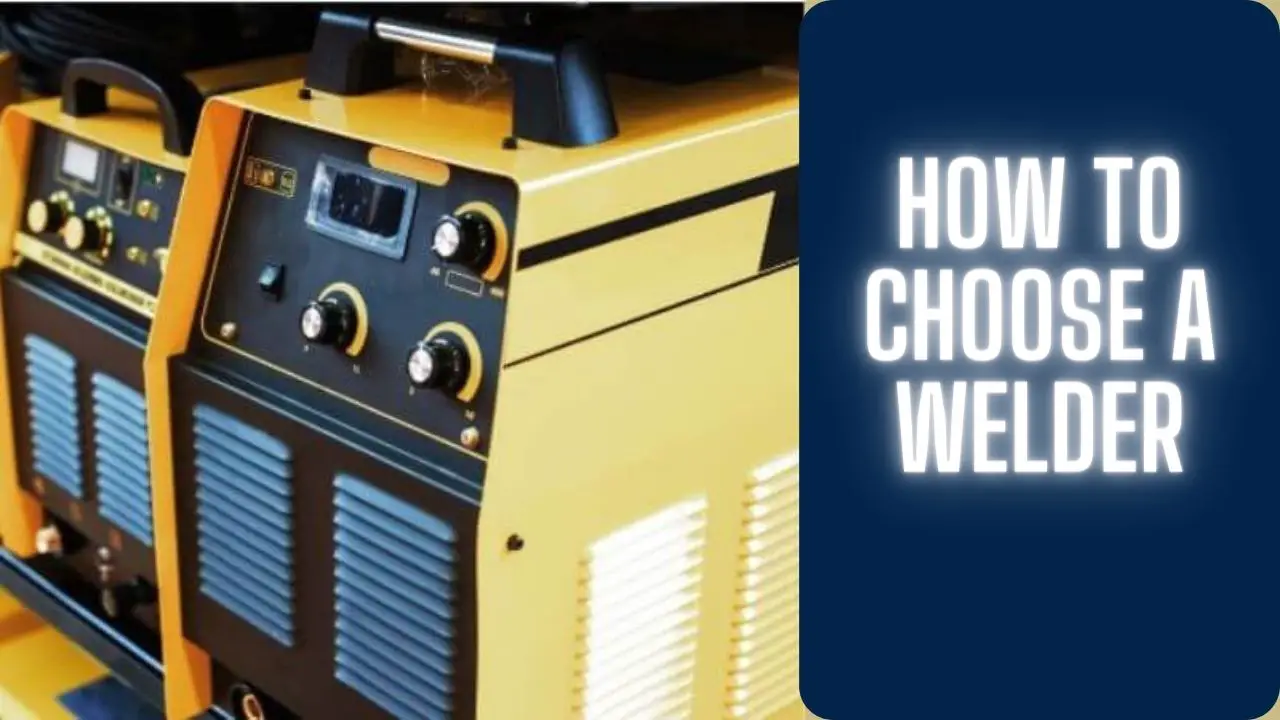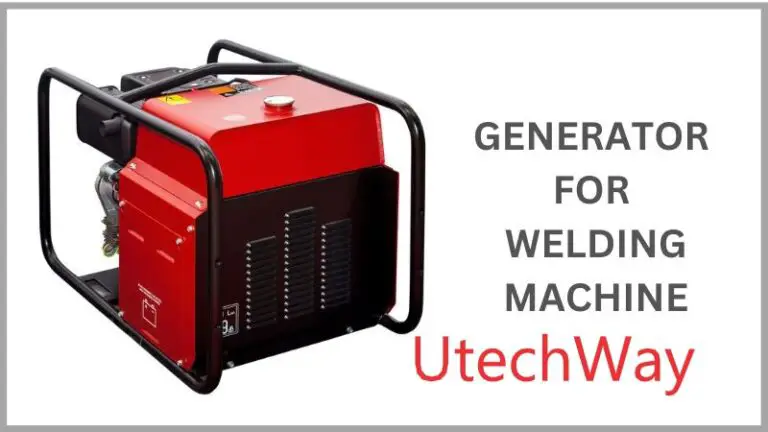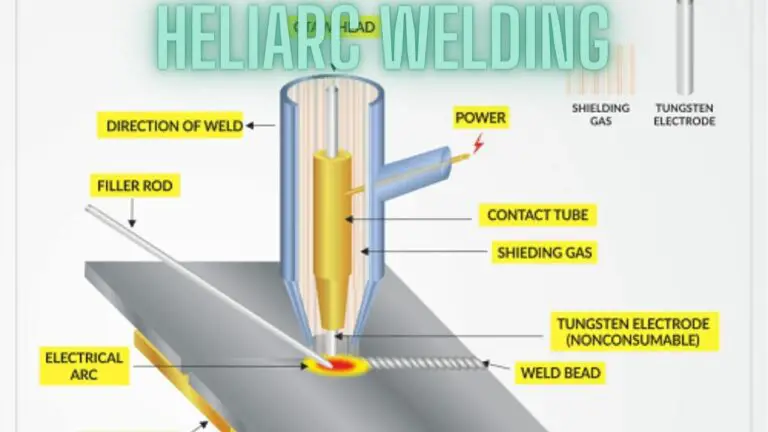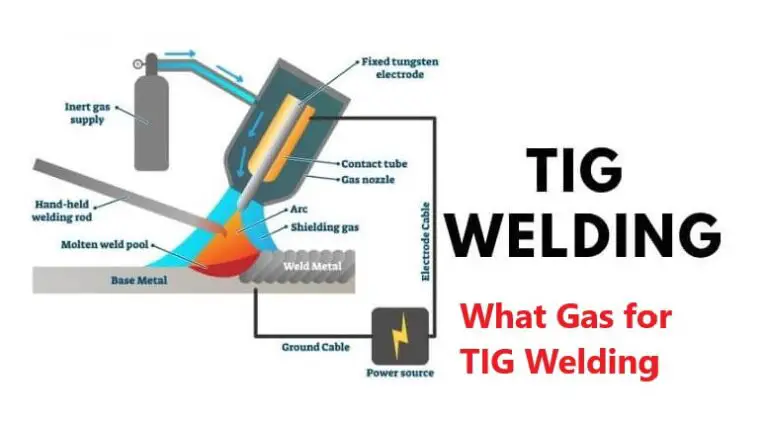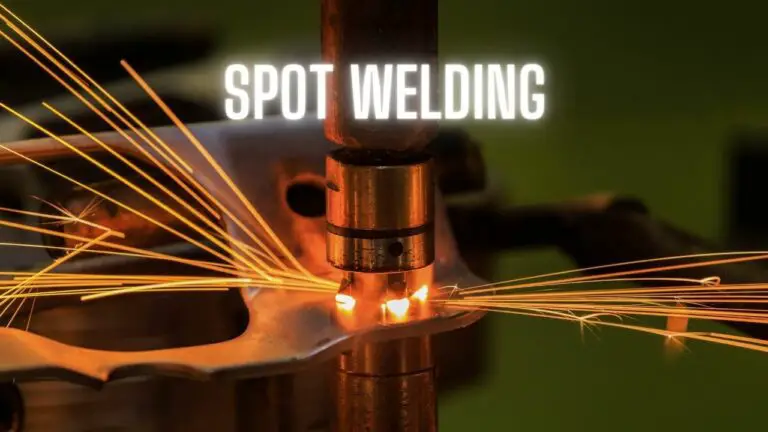How to Choose a Welder: A Comprehensive Guide
Introduction
Choosing a welder is a crucial decision for anyone involved in welding, whether as a hobbyist, DIY enthusiast, or professional. Welders come in various types, sizes, and capabilities, each suited to specific welding tasks and materials. This guide aims to provide comprehensive assistance in navigating the process of selecting the right welder for your needs. From understanding different welding processes to considering factors such as power source, welding output, and portability, this introduction sets the stage for an informed decision-making process.
Understanding Different Types of Welding Processes
Before choosing a welder, it’s essential to have a basic understanding of the various welding processes available. Different welding techniques offer distinct advantages and are suitable for specific applications, materials, and skill levels. Here are some common welding processes you should be familiar with:
- Shielded Metal Arc Welding (SMAW) or Stick Welding:
- Description: SMAW involves the use of a flux-coated electrode (stick) and an electric current to create an arc between the electrode and the workpiece, forming a weld pool.
- Applications: Stick welding is versatile and can be used for welding steel, stainless steel, cast iron, and other metals. It’s commonly used in construction, fabrication, maintenance, and repair work.
- Advantages: Stick welding is relatively simple, portable, and suitable for outdoor use. It doesn’t require shielding gas, making it less affected by wind and drafts.
- Gas Metal Arc Welding (GMAW) or MIG/MAG Welding:
- Description: GMAW uses a continuous wire electrode and a shielding gas (typically a mix of argon and carbon dioxide) to create an arc and melt the electrode, forming a weld bead.
- Applications: MIG/MAG welding is widely used in automotive, manufacturing, fabrication, and construction industries for welding steel, aluminum, stainless steel, and non-ferrous metals.
- Advantages: MIG/MAG welding offers high productivity, excellent weld quality, and versatility. It’s suitable for welding thin to thick materials and can be automated for mass production.
- Gas Tungsten Arc Welding (GTAW) or TIG Welding:
- Description: GTAW uses a non-consumable tungsten electrode and a shielding gas (usually argon) to create an arc and melt the base metal, forming a weld pool.
- Applications: TIG welding is preferred for welding exotic metals, thin materials, and critical joints requiring high-quality welds. It’s commonly used in aerospace, petrochemical, and precision fabrication industries.
- Advantages: TIG welding produces precise, clean, and aesthetically pleasing welds with minimal distortion. It allows for precise control of heat input and weld puddle manipulation.
- Flux-Cored Arc Welding (FCAW):
- Description: FCAW uses a tubular wire electrode filled with flux compounds to shield the weld pool from atmospheric contamination, eliminating the need for external shielding gas.
- Applications: FCAW is suitable for welding thick materials, outdoor welding, and welding in windy or drafty conditions. It’s commonly used in construction, shipbuilding, and heavy fabrication.
- Advantages: FCAW offers high deposition rates, deep penetration, and good mechanical properties. It’s more forgiving of dirty or rusty base metals compared to other welding processes.
- Submerged Arc Welding (SAW):
- Description: SAW involves feeding a continuous wire electrode and a granular flux over the weld joint, creating a submerged arc that shields the weld pool from atmospheric contamination.
- Applications: SAW is primarily used for welding thick materials in flat or horizontal positions, such as pressure vessels, pipelines, and heavy structural components.
- Advantages: SAW offers high deposition rates, deep penetration, and excellent weld quality. It’s ideal for high-production welding of large, long seams.
Understanding these different welding processes will help you determine which one best suits your specific needs, skill level, and the materials you’ll be welding. Consider factors such as material thickness, joint type, welding position, and desired weld quality when selecting a welder and choosing the appropriate welding process.
Assessing Your Welding Needs
Before choosing a welder, it’s essential to assess your welding needs thoroughly. Consider the following factors to determine the type of welder that best suits your requirements:
- Types of Welding Projects:
- Identify the specific welding projects you plan to undertake, such as fabrication, repair, maintenance, or hobbyist projects.
- Determine the materials you’ll be welding most frequently, including steel, aluminum, stainless steel, or exotic metals.
- Welding Processes:
- Evaluate which welding processes are most suitable for your projects based on material type, joint configuration, and desired weld quality.
- Consider the advantages and limitations of each welding process, such as ease of use, versatility, and required skill level.
- Skill Level:
- Assess your welding experience and skill level, whether you’re a beginner, intermediate welder, or professional with advanced skills.
- Choose a welder that matches your skill level and provides room for skill development and growth.
- Power Source:
- Determine the availability and type of power sources in your workspace, such as standard household outlets (120V) or higher voltage outlets (240V).
- Select a welder with a compatible power source that meets your voltage and amperage requirements.
- Welder Portability:
- Consider whether portability is essential for your welding needs, such as onsite repairs, fieldwork, or transportation between different work locations.
- Choose a welder with the appropriate size, weight, and mobility features, such as handles, wheels, or carrying straps.
- Welding Output and Duty Cycle:
- Evaluate the welding output and duty cycle requirements for your projects, including amperage range, welding voltage, and duty cycle percentage.
- Ensure that the welder’s output capabilities match the thickness of the materials you’ll be welding and the desired welding speed.
- Budget and Cost Considerations:
- Determine your budget for purchasing a welder, including the initial cost of the equipment, consumables, accessories, and ongoing maintenance.
- Compare prices and features of different welders within your budget range, considering long-term value, reliability, and warranty coverage.
- Future Expansion and Versatility:
- Anticipate potential future welding projects and consider whether the chosen welder can accommodate a variety of welding processes, materials, and applications.
- Look for welders with upgradeable features, expandable capabilities, or compatibility with accessories and attachments to enhance versatility.
By thoroughly assessing your welding needs and considering these key factors, you can make an informed decision when choosing a welder that meets your requirements, preferences, and budget. Whether you’re a hobbyist, DIY enthusiast, or professional welder, selecting the right welder will ensure successful and satisfying welding experiences for years to come.
Key Features to Look for in a Welder
When selecting a welder, it’s essential to consider various features and specifications to ensure that the chosen welder meets your specific requirements and preferences. Here are some key features to look for when choosing a welder:
- Welding Processes:
- Determine which welding processes the welder is capable of performing, such as Stick (SMAW), MIG/MAG (GMAW), TIG (GTAW), Flux-Cored (FCAW), or others.
- Choose a welder that offers the flexibility to perform multiple welding processes, allowing you to tackle a wide range of welding tasks and materials.
- Power Source and Input Voltage:
- Check the welder’s power source compatibility, including input voltage requirements (e.g., 120V, 240V) and available power outlets in your workspace.
- Select a welder with a power source that matches your existing electrical infrastructure and provides sufficient amperage for the desired welding output.
- Amperage Range and Welding Output:
- Evaluate the welder’s amperage range and welding output capabilities, considering the thickness of materials you’ll be welding and the desired welding speed.
- Choose a welder with adjustable amperage settings and sufficient output power to handle a variety of welding tasks, from thin sheet metal to thick structural components.
- Duty Cycle:
- Check the welder’s duty cycle rating, which indicates the percentage of time the welder can operate continuously without overheating or requiring cooldown periods.
- Select a welder with a duty cycle that meets your welding needs, considering the duration and intensity of your welding projects.
- Portability and Mobility:
- Consider the portability and mobility features of the welder, especially if you’ll be working in different locations or need to transport the welder frequently.
- Look for welders with compact, lightweight designs, ergonomic handles, and built-in wheels or carrying straps for easy maneuverability.
- User Interface and Controls:
- Evaluate the user interface and control panel layout of the welder, ensuring that it’s intuitive and easy to use, even for beginners or less experienced welders.
- Look for welders with clear, accessible controls, digital displays, and adjustable settings for precise control over welding parameters.
- Built-In Safety Features:
- Prioritize welders with built-in safety features to protect both the user and the equipment, such as thermal overload protection, voltage surge protection, and short-circuit protection.
- Ensure that the welder complies with relevant safety standards and certifications to minimize the risk of accidents or equipment damage.
- Build Quality and Durability:
- Assess the build quality, construction materials, and overall durability of the welder to ensure long-term reliability and performance.
- Look for welders constructed from robust materials, with sturdy casings, reinforced components, and reliable internal mechanisms.
- Accessories and Compatibility:
- Consider the availability of accessories, consumables, and compatible welding supplies for the chosen welder, such as welding electrodes, wire spools, torches, and gas regulators.
- Choose a welder with a wide range of compatible accessories and optional attachments to enhance versatility and productivity.
- Warranty and Customer Support:
- Check the warranty coverage and duration offered by the manufacturer, as well as the availability of customer support, technical assistance, and repair services.
- Select a welder from a reputable manufacturer with a proven track record of reliability, customer satisfaction, and responsive support.
By considering these key features and specifications, you can make an informed decision when choosing a welder that meets your welding needs, preferences, and budget. Whether you’re a beginner, hobbyist, or professional welder, selecting the right welder will ensure successful and satisfying welding experiences for years to come.
Budget Considerations
When choosing a welder, budget considerations play a significant role in determining which option is the most suitable for your needs. Here are some important budget considerations to keep in mind:
- Initial Cost:
- Consider the initial purchase price of the welder, which includes the cost of the welding machine itself, along with any included accessories or starter kits.
- Compare prices from different manufacturers and retailers to find a welder that offers the best value for your budget.
- Operating Costs:
- Factor in the ongoing operating costs associated with the welder, such as consumables (electrodes, wire, shielding gas), replacement parts, and maintenance supplies.
- Choose a welder with affordable consumables and readily available replacement parts to minimize long-term expenses.
- Power Source and Efficiency:
- Evaluate the energy efficiency of the welder, as higher energy consumption can result in increased electricity bills over time.
- Consider the cost of powering the welder based on your local electricity rates and usage patterns, especially for welders with higher power output requirements.
- Return on Investment (ROI):
- Assess the potential return on investment (ROI) of the welder in terms of the value it provides for your welding projects and the productivity gains it offers.
- Consider factors such as increased efficiency, improved weld quality, reduced downtime, and expanded capabilities when calculating ROI.
- Long-Term Value:
- Look beyond the initial purchase price and consider the long-term value of the welder, including its durability, reliability, performance, and versatility.
- Choose a welder with a reputation for quality construction, dependable operation, and lasting durability to ensure a worthwhile investment over time.
- Financing Options:
- Explore financing options, payment plans, or leasing arrangements offered by manufacturers, retailers, or financing companies to spread out the cost of the welder over time.
- Consider any available discounts, promotions, or incentives that may lower the upfront cost of purchasing the welder.
- Total Cost of Ownership (TCO):
- Calculate the total cost of ownership (TCO) of the welder, taking into account all associated expenses over its expected lifespan, including purchase price, operating costs, maintenance costs, and any additional expenses.
- Compare the TCO of different welders to determine which option offers the best overall value and affordability for your budget.
- Warranty Coverage:
- Consider the warranty coverage offered by the manufacturer, including the duration of coverage and any included services or repairs.
- Factor in the added peace of mind and protection provided by a comprehensive warranty when evaluating the overall cost-effectiveness of the welder.
By carefully considering these budget considerations, you can make an informed decision when choosing a welder that offers the best balance of performance, affordability, and long-term value for your specific welding needs and financial constraints. Remember to prioritize features and specifications that align with your budgetary requirements while still meeting your welding objectives and expectations.
Researching and Comparing Welder Models
Researching and comparing welder models is a crucial step in finding the best option that meets your specific welding needs and preferences. Here’s a comprehensive guide on how to conduct effective research and comparison:
- Define Your Requirements:
- Start by clearly defining your welding requirements, including the types of projects you’ll be working on, the materials you’ll be welding, and your skill level.
- Consider factors such as welding processes, power source compatibility, amperage range, duty cycle, portability, and budget constraints.
- Gather Information:
- Utilize various sources of information to gather details about different welder models, including manufacturer websites, product catalogs, online forums, welding community websites, and customer reviews.
- Take note of key specifications, features, and user feedback for each welder model to build a comprehensive understanding of their capabilities and performance.
- Compare Specifications:
- Create a spreadsheet or comparison chart to organize and compare the specifications of multiple welder models side by side.
- Compare important specifications such as welding processes supported, input voltage requirements, amperage range, duty cycle, weight, dimensions, warranty coverage, and price.
- Read Reviews and User Feedback:
- Read reviews and testimonials from other welders who have used the specific models you’re considering.
- Look for user feedback on welding forums, social media groups, and online marketplaces to gain insights into real-world experiences, reliability, and performance of the welders.
- Consider Brand Reputation and Reliability:
- Research the reputation and reliability of the brands manufacturing the welder models you’re interested in.
- Look for established brands with a history of producing high-quality welding equipment, excellent customer support, and reliable warranty coverage.
- Evaluate Value for Money:
- Assess the overall value proposition of each welder model by considering its features, performance, durability, warranty coverage, and price.
- Calculate the cost-effectiveness and return on investment (ROI) of each welder based on its total cost of ownership (TCO) over its expected lifespan.
- Seek Expert Advice:
- Consult with experienced welders, welding instructors, or industry professionals for recommendations and insights based on their expertise and firsthand knowledge.
- Attend welding trade shows, exhibitions, or workshops to see demonstrations of different welder models and interact with representatives from welding equipment manufacturers.
- Test and Demo:
- Whenever possible, visit local welding supply stores or equipment rental shops to test and demo the welder models you’re interested in.
- Evaluate the user interface, controls, ergonomics, and overall usability of the welders to determine which one feels most comfortable and intuitive to operate.
- Check for Special Offers and Promotions:
- Keep an eye out for special offers, promotions, discounts, or financing options available from manufacturers or retailers.
- Take advantage of seasonal sales, trade-in programs, or bundle deals to save money and get additional value with your welder purchase.
- Make an Informed Decision:
- After thorough research and comparison, make an informed decision based on your specific welding needs, preferences, and budget constraints.
- Choose the welder model that best aligns with your requirements and offers the best overall value in terms of performance, reliability, and affordability.
By following these steps and conducting diligent research and comparison, you can confidently select the welder model that meets your needs and helps you achieve successful welding outcomes. Remember to prioritize features and specifications that are most important to you and consider the long-term value and satisfaction of your investment in a quality welding machine.
Testing and Demoing Welders
Testing and demoing welders is a crucial step in the decision-making process, as it allows you to experience firsthand how different welder models perform and determine which one best suits your needs and preferences. Here’s a guide on how to effectively test and demo welders:
- Locate Local Welding Supply Stores or Equipment Rental Shops:
- Research and identify welding supply stores, equipment rental shops, or authorized dealers in your area that carry a variety of welder models for testing and demoing.
- Schedule a Visit or Appointment:
- Contact the selected stores or shops to inquire about their availability and schedule a visit or appointment to test and demo the welders.
- Inform them of your specific welding requirements, projects, and preferences to help them recommend suitable welder models for testing.
- Prepare a List of Welder Models to Test:
- Compile a list of welder models that you’re interested in testing based on your research, comparison, and recommendations from experts or peers.
- Prioritize welder models that meet your key requirements and budget constraints.
- Discuss Your Needs with the Store Staff:
- Upon arrival at the store or shop, discuss your welding needs, projects, and preferences with the staff or sales representatives.
- Provide them with insights into the types of materials you’ll be welding, the welding processes you prefer, and any specific features or specifications you’re looking for in a welder.
- Test and Demo Multiple Welder Models:
- Request to test and demo multiple welder models from your list to compare their performance, usability, and features.
- Ask the store staff to demonstrate how to set up and operate each welder, and try welding with each machine yourself to get a feel for its handling and responsiveness.
- Evaluate Welding Performance:
- Evaluate the welding performance of each welder model by testing it on different types of materials, thicknesses, and joint configurations.
- Assess factors such as arc stability, bead appearance, penetration depth, spatter generation, and overall weld quality to determine which welder meets your standards.
- Assess User Interface and Controls:
- Evaluate the user interface, controls, and display features of each welder to determine their ease of use, intuitiveness, and accessibility.
- Test the adjustability and responsiveness of settings such as amperage, voltage, wire speed, and gas flow to ensure precise control over welding parameters.
- Consider Ergonomics and Comfort:
- Pay attention to the ergonomics, design, and build quality of each welder, focusing on factors such as handle grip, torch ergonomics, cable length, and overall weight distribution.
- Assess the comfort and fatigue level associated with operating each welder for extended periods, especially if you’ll be using it for long welding sessions.
- Ask Questions and Seek Clarifications:
- Don’t hesitate to ask questions and seek clarifications from the store staff or sales representatives regarding any features, specifications, or concerns you have about the welder models.
- Seek their expert advice on choosing the most suitable welder for your specific welding needs, skill level, and budget.
- Make an Informed Decision:
- After testing and demoing multiple welder models and gathering feedback from the store staff, carefully evaluate your experiences and make an informed decision on which welder best meets your requirements.
- Consider factors such as welding performance, usability, ergonomics, build quality, warranty coverage, and overall value for money when making your final decision.
By following these steps and conducting thorough testing and demoing of welder models, you can confidently select the welder that offers the best combination of performance, usability, and value for your specific welding needs and preferences. Remember to take your time, ask questions, and prioritize features that are most important to you in a welding machine.
Making the Final Decision
Making the final decision on which welder to purchase is a significant step, and it’s essential to ensure that you’ve thoroughly evaluated your options and considered all relevant factors. Here’s a guide to help you make the final decision:
- Review Your Requirements:
- Revisit your welding requirements, preferences, and budget constraints to ensure that you have a clear understanding of what you need in a welder.
- Consider factors such as the types of projects you’ll be working on, the materials you’ll be welding, your skill level, and your workspace environment.
- Compare Test Results:
- Review the results of your testing and demoing sessions, including your observations, feedback from store staff, and any notes you’ve taken during the process.
- Compare the performance, usability, features, and overall impressions of the welder models you’ve tested to identify strengths and weaknesses.
- Evaluate Long-Term Value:
- Consider the long-term value proposition of each welder model, taking into account factors such as durability, reliability, warranty coverage, and total cost of ownership (TCO).
- Assess the potential return on investment (ROI) of each welder based on its ability to meet your welding needs and deliver satisfactory results over time.
- Seek Additional Information:
- Research any remaining questions or concerns you may have about the welder models under consideration.
- Consult with experts, read online reviews, and gather additional information from reputable sources to address any uncertainties and make an informed decision.
- Prioritize Key Factors:
- Prioritize the key factors that are most important to you in a welder, such as welding performance, usability, portability, build quality, warranty coverage, and affordability.
- Identify which welder model aligns best with your priorities and offers the most compelling combination of features and benefits for your specific needs.
- Consider Budget and Financing Options:
- Revisit your budget considerations and ensure that the chosen welder model fits within your budget constraints.
- Explore financing options, payment plans, or special offers that may help make the purchase more affordable and manageable over time.
- Trust Your Instincts:
- Trust your instincts and intuition when making the final decision. Consider how each welder model feels to you, both in terms of its performance and how well it aligns with your preferences and expectations.
- Choose the welder that resonates with you the most and inspires confidence in its ability to meet your welding needs and deliver satisfactory results.
- Make the Purchase:
- Once you’ve made your final decision, proceed with confidence and make the purchase from a reputable retailer or authorized dealer.
- Ensure that you understand the terms of the sale, including warranty coverage, return policies, and any additional services or support offered by the seller.
- Plan for Set-Up and Use:
- Prepare for the arrival of your new welder by setting aside time to set it up, familiarize yourself with its operation, and start using it for your welding projects.
- Follow the manufacturer’s instructions, safety guidelines, and recommended practices to ensure safe and effective use of the welder.
- Enjoy Your Welding Experience:
- Embrace the opportunity to explore your welding capabilities and unleash your creativity with your new welder.
- Enjoy the satisfaction of knowing that you’ve made a well-informed decision and invested in a welding machine that meets your needs and helps you achieve successful welding outcomes.
By following these steps and carefully considering all relevant factors, you can confidently make the final decision on which welder to purchase and embark on your welding journey with enthusiasm and confidence. Remember to trust your instincts, prioritize key factors, and choose the welder that best aligns with your requirements and preferences.
FAQS
What are the most common types of welding processes, and how do I choose the right one for my needs?
The most common welding processes are MIG, TIG, Stick, and Flux-Cored Arc Welding (FCAW). To choose the right one, consider the type of metals you’ll be welding, the thickness of the materials, your skill level, and the specific requirements of your projects. Each process has its strengths and limitations, so match the process to your welding needs.
What is the difference between AC and DC welding, and which is better for my applications?
AC (Alternating Current) and DC (Direct Current) welding have different applications. AC is commonly used for welding aluminum and is suitable for thin materials. DC is more versatile and can be used for welding a variety of metals, including steel and stainless steel. Your choice depends on the materials you’ll be working with and your welding process.
How do I determine the voltage and amperage requirements for a welder?
Check the welder’s specifications to find the voltage and amperage requirements. Ensure your power supply matches these requirements. Some welders are dual-voltage, allowing you to switch between different power sources.
What is a duty cycle, and why is it important when choosing a welder?
The duty cycle represents the percentage of time a welder can operate within a specific time frame without overheating. It’s important because it indicates the welder’s capability for continuous use. Higher-end welders often have longer duty cycles, which is crucial for extended welding sessions.
Can I use a portable welder for heavy-duty projects, or do I need a stationary unit?
The choice between portable and stationary welders depends on your specific projects. Portable welders are suitable for on-the-go work but may have limitations in terms of power output and duty cycle. Heavy-duty projects may require a larger, stationary welder with higher amperage capabilities.
What safety features should I look for in a welder?
Key safety features include thermal overload protection, which prevents overheating, and a cooling system (e.g., fans or water cooling) to maintain the welder’s temperature. Additionally, ensure the welder is compliant with safety standards and regulations.
Are there welders suitable for beginners, or do I need prior welding experience?
There are welders designed for beginners, often known for their user-friendly features and ease of use. However, even as a beginner, you can choose more versatile welders as long as you invest time in training and gaining welding skills. Practice and safety precautions are essential for successful welding, regardless of your experience level.
How do I choose the right size and thickness capacity for a welder?
Determine the maximum thickness of materials you’ll be welding in your projects. Choose a welder with an appropriate amperage range and voltage settings that can accommodate your material thickness. It’s important to have a welder that matches the thickness of the materials you work with.
Conclusion
In conclusion, selecting the right welder involves a thoughtful evaluation of your welding needs, the specific welding processes, power source, size, quality, and budget considerations. By carefully assessing these factors and conducting thorough research, you can make an informed decision and choose a welder that will serve you well for your welding projects.

